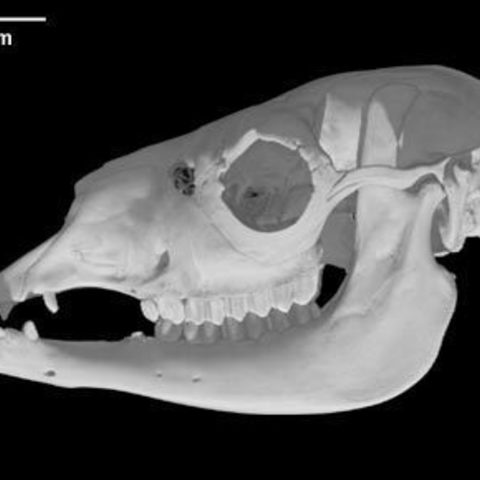
Lama glama, Llama skull
cults3d
The llama (Lama glama) is descended from the guanaco (L. guanaco), a wild species that roams the Andean mountains. Domestication of llamas dates back 6,000 to 7,000 years, as evidenced by archaeological finds in the high-altitude regions of Peru and northwest Argentina. Today, these domesticated creatures thrive from Peru to the Argentine border. As members of the Camelidae family, llamas are closely related to South American camelids like the vicuña and Old World camelids such as camels. Within this family, there are three distinct genera: Lama in South America, Vicugna in the Andes, and Camelus in Asia. Llamas stand out for their unique characteristics. They are hornless and antlerless, with long, slender necks that allow them to reach high into the trees. Their stomachs are divided into three sections, allowing for efficient digestion of plant material. In the hind legs, llamas have a greatly reduced fibula, while their foot bones fuse together to form a single cannon bone. The feet themselves consist of only two digits, covered by a protective nail instead of hooves. One notable feature of llamas is their ability to rest on their stomachs by bending their hind limbs beneath their bodies. This unique behavior allows them to relax in comfort while digesting their food. The specimen TMM M-2052, a female llama, was scanned using high-resolution X-ray CT technology at the University of Texas High-Resolution X-ray CT Facility. Funding for this project came from a National Science Foundation Digital Libraries Initiative grant awarded to Dr. Timothy Rowe of the Department of Geological Sciences at The University of Texas at Austin.
With this file you will be able to print Lama glama, Llama skull with your 3D printer. Click on the button and save the file on your computer to work, edit or customize your design. You can also find more 3D designs for printers on Lama glama, Llama skull.
